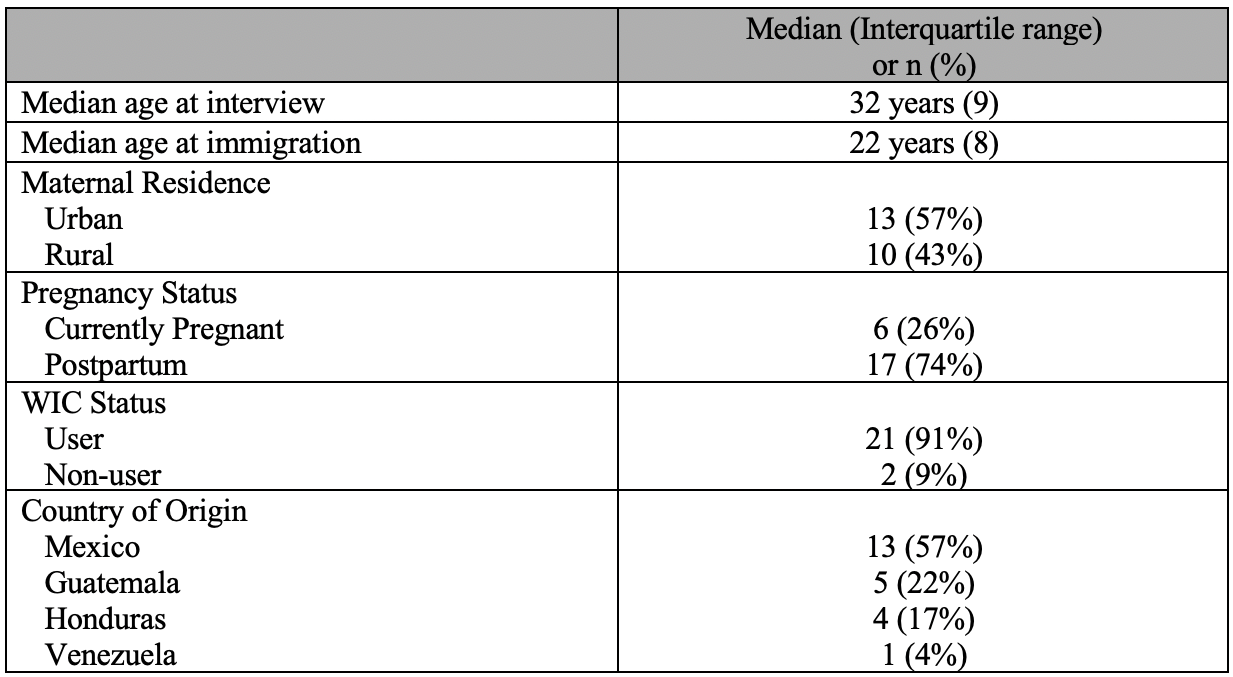Neonatal-Perinatal Health Care Delivery: Practices and Procedures
Neonatal-Perinatal Health Care Delivery 2: Epi/HSR Equity
636 - Exploring Experiences with WIC among Latinx Immigrant Birthing People
Friday, April 28, 2023
5:15 PM - 7:15 PM ET
Poster Number: 636
Publication Number: 636.141
Publication Number: 636.141
Jerimiah J. Kouka, Childrens Hospital of Philadelphia, Randallstown, MD, United States; Diana Worsley, Childrens Hospital of Philadelphia, Philadelphia, PA, United States; Alejandra Barreto, Childrens Hospital of Philadelphia, Lynwood, CA, United States; Alicia Laguna-Torres, Childrens Hospital of Philadelphia, Philadelphia, PA, United States; Kate E. Wallis, Perelman School of Medicine at the University of Pennsylvania, PHILADELPHIA, PA, United States; Lauren Palladino, Children's Hospital of Philadelphia, Philadelphia, PA, United States; Alyssa Tindall, Children's Hospital of Philadelphia, Philadelphia, PA, United States; Scott A. Lorch, The Children's Hospital of Philadelphia/University of Pennsylvnaia, Philadelphia, PA, United States; Senbagam Virudachalam, Children's Hospital of Philadelphia and University of Pennsylvania, Philadelphia, PA, United States; Diana Montoya-Williams, Children's Hospital of Philadelphia, Philadelphia, PA, United States; Rosalinda Hernandez, Puentes de salud, Philadelphia, PA, United States; Michelle-Marie Peña, Children's Healthcare of Atlanta, Atlanta, GA, United States; Nicole Salva, University of Pennsylvania, Philadelphia, PA, United States; Marjie Mogul, Maternity Care Coalition, Philadelphia, PA, United States

Jerimiah J. Kouka (he/him/his)
Researcher
Childrens Hospital of Philadelphia
Randallstown, Maryland, United States
Presenting Author(s)
Background: The 2019 Public Charge rule change led to a “chilling effect” of decreased health and social benefit utilization among immigrant Latinx birth patients, including use of the Supplemental Nutrition Program for Women, Infants, and Children (WIC) program. This is concerning because WIC is available to low-income pregnant people regardless of immigration status, and participation is linked to healthier birth weights.
Objective: To understand the current WIC experiences of Latinx birth parents and elicit their insight into what would make them feel more comfortable using the program.
Design/Methods: In this community-engaged qualitative study, we recruited currently or recently (in the last 2 years) pregnant immigrant Latinx birthing people living in the greater Philadelphia area. A semi-structured interview guide was developed with community partners to ask about knowledge and utilization of the WIC program. Interviews were conducted in Spanish by bilingual research team members. Interviews were recorded, transcribed, translated, and analyzed using NVIVO 12. We used modified grounded theory to identify major themes.
Results: Thematic saturation was achieved with 24 participants; 91% had used WIC (Table 1). Four major themes emerged: 1) high awareness of the WIC program; 2) positive experiences at WIC offices; 3) negative experiences at both WIC offices and grocery stores due to language barriers and knowledge gaps among both WIC users and store employees; 4) reluctance to use WIC due to fears that it would have adverse impacts on immigration status such as deportation. To increase comfort with WIC use, respondents suggested being part of a community with a high prevalence of WIC enrollment, clarifying ongoing community misinformation about WIC eligibility, and access to Spanish-speaking employees at WIC offices and stores (Table 3).
Conclusion(s): Despite high engagement with WIC, misinformation persists among Latinx birthing parents and causes distress. Participants’ suggestions for patients, providers, WIC offices and grocery stores could be translated into policy or programmatic interventions to optimize the WIC experience . Healthcare systems could consider prenatal support groups and patient navigators for Latinx immigrant birthing parents. Prenatal clinicians could be empowered to educate patients regarding immigrants’ rights and eligibility for prenatal social support programs like WIC. Lastly, local WIC programs could partner with small, ethnic food markets to assess and improve grocery employee training and thus, optimize community members’ experiences in the store.

.png)
.png)
